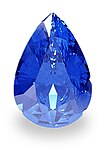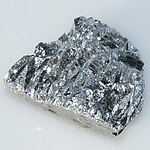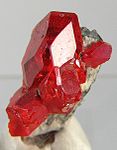பெரிப்ளசு காட்டும் தமிழகம்
பெரிப்ளசு என்பது ஒரு கையேட்டு நூல். இந்த வழித்துணைவன் நூலை எழுதிவைத்தவர் ஒரு கிரேக்க மாலுமி. இவரது பெயர் தெரியாததால் இவரையும் அவரது நூலின் பெயரால் பெரிப்ளசு என்றனர். பெரிப்ளசு நூல்கள் பல இருந்தாலும் அவற்றில் செங்கடல் செலவு எனப்படும் எரித்திரியக்கடல் கையேட்டு நூலே (Periplus of the Erythraean Sea) தமிழகத்தை பற்றிய குறிப்புகளைத் தருகிறது. இந்த செங்கடல் கையேட்டு நூல் முதலாம் நூற்றாண்டிலிருந்து மூன்றாம் நூற்றாண்டுக்கு இடையே உள்ள காலகட்டங்களில் எழுதப்பட்டிருக்கலாம். இவர் கிரேக்க நாட்டிலிருந்து அரபிக்கடல் வழியாகப் தென்மேற்குப் பருவக்காற்றை பயன்படுத்தி வரும் பாய்மரக் கப்பலில் கி.பி. முதல் நூற்றாண்டின் போது இந்தியாவுக்கு வந்தார் என கருதப்படுகிறது.[1] தான் வந்த வழி, கண்ட இடங்கள், அந்த இடங்களுக்கு இடையேயுள்ள தொலைவு, அங்கு வாழ்ந்த மக்கள், அவர்களின் தொழில், பழக்க-வழக்கங்கள், ஊரில் நடந்த வாணிகம், ஊரை ஆண்ட அரசர்கள் போன்றவற்றைத் தன் குறிப்பில் எழுதி வைத்துள்ளார்.
அவற்றில் அக்கால இந்தியாவின் மேற்குக் கடற்கரை, கிழக்குக் கடற்கரைத் துறைமுகங்கள், கங்கையாற்றுச் சமவெளி பற்றிய குறிப்புகள் உள்ளன.
தமிழகம், முசிறி, தொண்டி, நறவு, பந்தர், கொற்கை, எயிற்பட்டினம், பாண்டியர், சேரர், சோழ-மண்டலம் முதலான பெயர்களும் அவற்றைப் பற்றிய குறிப்புகளும் உள்ளன. [2][3] அவை இங்குத் தொகுத்துத் தரப்படுகின்றன. [4]
கடற்பயணப் படம்[தொகு]
பத்தி 54 [5][தொகு]
தொண்டியை இவர் ‘திண்டிஸ்’ எனக் குறிப்பிடுகிறார். தொண்டி சேரநாட்டு ஊர். முசிறி (முசிறிஸ்) போலவே கடல் சார்ந்த வெளியில் சேரநாட்டில் இருந்த ஊர். அரேபியாவிலிருந்தும், கிரேக்கத்திலிருந்தும் சரக்குக் கப்பல்கள் அங்கு வந்தன. தொண்டி ஆற்றங்கரையில் அமைந்திருந்தது. தொண்டிக்கும் முசிறிக்கும் இடைவெளி 500 கண்ணிய தூரம். [6] தொண்டியிலிருந்து ஆற்றின் வழியே 20 கண்ணிய தூரம் நாட்டுக்குள் செல்லலாம். முசிறியிலிருந்து 500 கண்ணிய தூரத்தில் நெல்சிந்தா ஊர் உள்ளது. இது பாண்டிய நாட்டு ஊர். நெல்லினூரும் கடலிலிருந்து 120 கண்ணியம் தொலைவில், ஆற்றங்கரையில் உள்ளது.
பத்தி 55 [7][தொகு]
ஆறு கடலோடு கலக்கும் குத்தில் 'பக்கரே' என்னும் ஊர் உள்ளது. இது சங்க இலக்கியங்களில் பந்தர் எனக் குறிப்பிடப்பட்டுள்ளது. நெல்சிந்தையிலிருந்து வரும் பொருள்களை ஏற்றுமதி செய்ய பக்கரே துறைமுகத்தில் மரக்கலங்கள் நங்கூரம் பாய்ச்சி நிறுத்தப்பட்டிருக்கும். இத் துறைமுகத்துக்கு வரும் ஆற்றுக் கால்வாய்கள் குப்பைக் கூளங்கள் அடங்கிய சேற்று சேற்று நீரைக் கொண்டு தூய்மையற்றுக் கிடக்கும். இந்த மூன்று சந்தை-நகரங்களின் அரசர்கள் உள்நாட்டுப் பகுதியில் இருந்துகொண்டு அரசாண்டுவந்தனர். அந்த அரசர்களின் ஆட்கள் என்ற முறையில் இந்தத் துறைமுகச் சந்தைகளுக்கு வரும் வெளிநாட்டு வணிகர்களைக் காண வருவர். அவர்கள் நாகர் (serpents) என அழைக்கப்படுபவர்கள். கருநிறத் தோற்றம் கொண்டவர்கள். குள்ளமானவர்கள். (கூளியர்) படமெடுத்தாடும் பாம்பைப் போலப் பம்பைத் தலை உடையவர்கள். இரத்தச் சிவப்பு-நிறக் கண்களை உடையவர்கள்.
பத்தி 56 [8][தொகு]
அவர்கள் பெரிய கப்பல்களில் நல்ல தரமான மிளகையும், மலைபடு திரவியங்களையும் மிகுதியாக ஏற்றிக்கொண்டு இந்தச் சந்தை நகரங்களுக்கு வருவார்கள். அவை இங்கிருந்து ஏற்றுமதி செய்யப்படும். மற்றும் நாணயம் [9], இரத்தினக் கற்கள், மெல்லிய துணியாடைகள் (மிகுதியாக அன்று), கலை உருவம் கொண்ட லினன் துணிகள், நீல மணிக் கற்கள், பவளம், நாட்டுக் கண்ணாடி, செம்பு, தகரம், காரீயம், நறவு (அதிகமன்று), செம்படடிகம், செம்படிகம் பதித்த அணிகலன்கள், கடல்-பயணிகளுக்குப் போதுமான கோதுமை ஆகியனவும் உள்-நாட்டு வணிகர்களால் ஏற்றுமதி செய்யப்படும். மிளகு கொட்டநரா (குட்டநாடு) மாவட்டத்திலிருந்து அதிகமான அளவில் ஏற்றுமதி செய்வர். இவற்றுடன் மிகமிகத் தரமான முத்து, யானைத் தத்தம், பட்டுத்துணி, கங்கைச் சமவெளியிலிருந்து இறக்குமதி செய்யப்பட்ட மணமுள்ள வெட்டிவேர் முதலான மூலிகைகள் [10], உள்நாட்டுப் பகுதியிலிருந்து கொண்டுவரப்பட்ட பிரிஞ்சி-இலை, தெக்காணக் கடலோரமாகக் கொண்டுவரப்பட்ட பளிங்குக் கற்கள், பல்வகை வைரங்கள், நீலக் கற்கள், கிரைசுத் தீவிலிருந்து (கடம்பத் தீவு)கொண்டுவரப்பட்ட ஆமை ஓடுகள் முதலானவையும் இந்தத் துறைமுகங்களிலிருந்து ஏற்றுமதி செய்யப்பட்டன. உகந்த பருவக் காற்று வீசும் சூலை மாதத்தில் எகிப்பிலிருந்து வந்த கப்பல்களில் இவை ஏற்றுமதி செய்யப்பட்டன.
தமிழகம் ஏற்றுமதி செய்த பொருள்கள் - படம்[தொகு]
-
pearls, முத்துகள்
-
sapphires, நீலமணிகள்
-
Topaz, இரத்தினக் கற்கள்
-
Antimony, நீல மணிக் கற்கள்
-
Realgar, செம்படிகம்
-
Realgar, செம்படிகம்
-
malabathrum, பிரிஞ்சி-இலை
-
spikenard வகைகளில் ஒன்றான வெற்றிலை
-
spikenard வகை, வெட்டிவேர்
-
pepper, மிளகு
-
ivory, யானைத் தந்தம்
-
coral, பவள வகை
-
wheat எனப்படும் கோதுமை (வழிப்பயண உணவுக்காக)
-
transparent stones of' all kinds. பல்வகை பளிங்குக் கற்கள் (படம் மெசபதோமியக் கற்கள்)
-
transparent stones of' all kinds. பல்வகை பளிங்குக் கற்கள் (படம் மெசபதோமியக் கற்கள்)
-
tortoise shell, ஆமை ஓடுகள்
பத்தி 57 [11][தொகு]
கானா, ஏடமான் அரேபியா நாடுகளிலிருந்து சிறிய படகுக்கப்பல் வழியாக இந்த முழுப் பயணமும் நிகழ்ந்தது. கடற்கரை ஓரமாக நிகழ்ந்தது. ஹிப்பாலஸ் என்னும் கப்பல் மாலுமி துறைமுகங்களைப் பற்றியும், ஆங்காங்குள்ள கடல்களின் தன்மை பற்றியும் அறிந்தவன். அவன் முதலில் பெருங்கடலைக் குறுக்காகக் கடக்கும் வழியைக் கண்டறிந்தான். அப்போது இந்தியாவில் எடீசின் காற்று [12] வீசத் தொடங்கியது. இந்தக் காற்றை மாலுமி ஹிப்பாலஸ் கணித்தறிந்ததால், இந்தக் காற்றுக்கும் 'ஹிப்பாலஸ்' எனப் பெயர் சூட்டப்பட்டது. அந்த நாள் முதல் இந்த நாள் வரை சிலர் 'கானா'விலிருந்தும், மற்றும் சிலர் 'ஸ்பைஸ்'-முனையிலிருந்தும் புறப்பட்டுக் கடற்பயணம் நடைபெறுகிறது. இந்தக் காற்றின் உதவியால் தமிழக்ம் [13] கப்பல்களின் தலையாகிய பாய்மரங்களை விரிப்பதில்லை. பாரிகாசா, சைத்தியா ஆகிய வளைகுடா நகரங்களை மூன்றே நாட்களில் பருவக் காற்றின் உதவியால் கடற்கரை ஓரமாகச் சென்றடையலாம்.
பத்தி 58 [14][தொகு]
பாக்கரே (பந்தர்) துறைமுகத்துக்கு அப்பால் கரும்சிவப்பு மலைகள் கூடிய கடற்கரையிலிருந்து தொடங்கி தெற்கு நோக்கி நீண்டு பரலியா மாவட்டம் உள்ளது. அங்குள்ள முதலில் உள்ள ஊர் 'பலிதா'. அங்கே அழகிய துறைமுகமும், கடற்கரையில் சிற்றூரும் உண்டு. அதனையும் தாண்டிச் சென்றால் வரும் ஊர் 'கொமரி' (குமரி). இந்தக் குமரி முனையில் துறைமுகமும் உண்டு. தன் வாழ்நாளின் எஞ்சிய காலத்தைப் புனிதமாக்கிக்கொள்ள விரும்பும் ஆண்களும், பெண்களும் இங்கு வந்து நீராடி வாழ்விடமாக்கிக் கொள்வர். இங்குப் பெண்-தெய்வம் உறைவதாகச் சொல்கின்றனர்.
பத்தி 59 [15][தொகு]

கொமரி என்னும் குமரிக்குத் தெற்கில் பாண்டியப் பெருநாட்டிக்குட்பட்ட 'கொல்சி' (கொற்கை) உள்ளது. இங்கு முத்துக் குளிப்போர் வாழ்கின்றனர். அவர்கள் வெறுத்தொதுக்கப்பட்ட குற்றவாளிகள். கொல்கிக்கு தொடர்ந்து 'கடற்கரை நாடு' என அழைக்கப்படும் ஒரு வளைகுடா மாவட்டம் உள்ளது. அந்த வட்டார நாடு 'அர்காரு' (இராமேஸ்வரம்) என்று அழைக்கப்படுகிறது. இதன் கடற்கரையிலிருந்து வேறு எங்கி்ல்லாத அளவு முத்துகள் வாங்கப்படுகின்றன. இங்கிருந்து 'அர்காரிட்டி' எனப்படும் 'மஸ்லின்' மெல்லாடைகள் ஏற்றுமதி செய்யப்படுகின்றன.
பத்தி 60 [16][தொகு]
தமிரிக்காவின் வடக்கிலிருந்து மிக முக்கியமான நாடுகளின் சந்தை நகரங்கள் மற்றும் துறைமுகங்கள் ஆகியவற்றில் கப்பல் நிறுத்தப்பட்டது. இங்கு கடற்கரையிலிருந்து தொலைவில் கப்பல்கள் நிறுத்தப்பட்டிருந்தன. அவற்றுள் குறிப்பிடத் தக்கவை முதலில் 'கமரா', அடுத்து 'புதுக்கா' (புகார்), அடுத்து 'சோபட்மா' (எயிற்பட்டினம்) என்பன. 'சங்காரா' என அழைக்கப்பட்ட ஒரே மரத்தாலான மற்றும் நுனியில் கட்டப்பட்ட நீளமான கப்பலை பயன்படுத்தினர். 'கிரிசி', கங்கைவெளி ஆகிய இடங்களுக்குச் பயணம் செய்ய 'கொலந்தியா' (சொழாந்தியம்) என்றழைக்கப்பட்ட மிகப் பெரிய கப்பல்கள் பயன்படுத்தப்பட்டன. தமிழகத்துப் பொருள்கள் எல்லாமே இந்தச் சந்தைப் பட்டினங்களிலிருந்து ஏற்றுமதி செய்யப்பட்டன. எகிப்திலிருந்து வந்த பொருள்கள் இறங்கியது இவற்றிற்குத் தனிப் பெருமை. தமிழகப் பொருள்கள் இங்கிருந்து 'பரலியா' என்னும் துறைமுகம்</ref> வழியாக ஏற்றுமதி செய்யப்பட்டன.
படத்தில் இடக் குறிப்பிடங்கள்[தொகு]
- தமிரிகா என்பது சேரநாட்டுக் கடலோரம்
- புதுக்கா என்பது பாண்டிச்சேரி
- அருகா என்பது உறையூர்
- கமரா என்பது காலப்பட்டினம்
- நெல்சிந்தா என்பது மேலைக்கடல் துறைமுகம்
- நவ்ரா என்பது கண்ணனூர்
மேலும் காண்க[தொகு]
அடிக்குறிப்பு[தொகு]
- ↑ Lance Jenott. "The Voyage around the Erythraean Sea". June, 2004. http://depts.washington.edu. பார்க்கப்பட்ட நாள் 06 ஆகஸ்ட் 2013.
{{cite web}}: Check date values in:|accessdate=(help); External link in|publisher= - ↑
- பெரிப்ளஸ் குறிப்புகள் பத்தி 10
- ↑
- ↑ The Periplus Maris Erythraei (or ‘Voyage around the Erythraean Sea’) is an anonymous work from around the middle of the first century CE written by a Greek speaking Egyptian merchant நியூயார்க் போத்தம் பல்கலைக் கழக வெளியீடு
- ↑ 54. Tyndis is of the Kingdom of Cerobothra; it is a village in plain sight by the sea. Muziris, of the same Kingdom, abounds in ships sent there with cargoes from Arabia, and by the Greeks; it is located on a river, distant from Tyndis by river and sea five hundred stadia, and up the river from the shore twenty stadia. Nelcynda is distant from Muziris by river and sea about five hundred stadia, and is of another Kingdom, the Pandian. This place also is situated on a river, about one hundred and twenty stadia from the sea. The Voyage around the Erythraean Sea
- ↑ ஸ்டேடியம் கண்ணுக்கெட்டிய தூரம்.
- ↑ There is another place at the mouth of this river, the village of Bacare, to which ships drop down on the outward voyage from Nelcynda, and anchor in the roadstead to take on their cargoes; because the river is full of shoals and the channels are not clear. The kings of both these market-towns live in the interior. And as a sign to those approaching these places from the sea there are serpents coming forth to meet you, black in color, but shorter, like snakes in the head, and with blood-red eyes.
- ↑ They send large ships to these market-towns on account of the great quantity and bulk of pepper and malabathrum. There are imported here, in the first place, a great quantity of coin; topaz, thin clothing, not much; figured linens, antimony, coral, crude glass, copper, tin, lead; wine, not much, but as much as at Barygaza; realgar and orpiment; and wheat enough for the sailors, for this is not dealt in by the merchants there. There is exported pepper, which is produced in quantity in only one region near these markets, a district called Cottonara. Besides this there are exported great quantities of fine pearls, ivory, silk cloth, spikenard from the Ganges, malabathrum from the places in the interior, transparent stones of' all kinds, diamonds and sapphires, and tortoise-shell; that from Chryse Island, and that taken among the islands along the coast of Damirica. They make the voyage to this place in a favorable season who set out from Egypt about the month of July, that is Epiphi.
- ↑ வணிகத்தில் மாற்றிக்கொள்ளப்பட்டவை
- ↑ spikenard from the Ganges
- ↑ This whole voyage as above described, from Cana and Eudaemon Arabia, they used to make in small vessels, sailing close around the shores of the gulfs; and Hippalus was the pilot who by observing the location of the ports and the conditions of the sea, first discovered how to lay his course straight across the ocean. For at the same time when with us the Etesian winds are blowing, on the shores of India the wind sets in from the ocean, and this southwest wind is called Hippalus, from the name of him who first discovered the passage across. From that time to the present day ships start, some direct from Cana, and some from the Cape of Spices; and those bound for Damirica throw the shlp's head considerably off the wind; while those bound for Barygaza and Scythia keep along shore not more than three days and for the rest of the time hold the same course straight out to sea from that region, with a favorable wind, quite away from the land, and so sail outside past the aforesaid gulfs.
- ↑ ஏடனிலிருந்து வீசும் தென்மேற்குப் பருவக்காற்று
- ↑ தமிரிகா
- ↑ Beyond Bacare there is the Dark Red Mountain, and another district stretching along the coast toward the south, called Paralia. The first place is called Balita; it has a fine harbor and a village by the shore. Beyond this there is another place called Comari, at which are the Cape of Comari and a harbor; hither come those men who wish to consecrate themselves for the rest of their lives, and bathe and dwell in celibacy; and women also do the same; for it is told that a goddess once dwelt here and bathed.
- ↑ From Comari toward the south this region extends to Colchi, where the pearl-fisheries are; (they are worked by condemned criminals); and it belongs to the Pandian Kingdom. Beyond Colchi there follows another district called the Coast Country, which lies on a bay, and has a region inland called Argaru. At this place, and nowhere else, are bought the pearls gathered on the coast thereabouts; and from there are exported muslins, those called Argaritic.
- ↑ 60. Among the market-towns of these countries, and the harbors where the ships put in from Damirica [=Limyrike] and from the north, the most important are, in order as they lie, first Camara, then Poduca, then Sopatma; in which there are ships of the country coasting along the shore as far as Damirica; and other very large vessels made of single logs bound together, called sangara: but those which make the voyage to Chryse and to the Ganges are called colandia, and are very large. There are imported into these places everything made in Damirica, and the greatest part of what is brought at any time from Egypt comes here, together with most kinds of all the things that are brought from Damirica and of those that are carried through Paralia. - The Periplus Maris Erythraei (or ‘Voyage around the Erythraean Sea’) is an anonymous work from around the middle of the first century CE written by a Greek speaking Egyptian merchant.

















